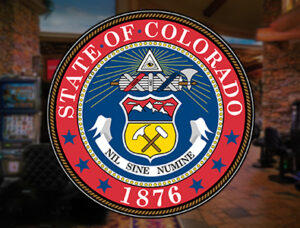The Lottery: An In-Depth Analysis
Introduction
The lottery stands out as one of the most perplexing forms of gambling available. If you’re reading this, chances are you’re seeking the best possible gamble with favorable odds. Unfortunately, the lottery falls short in meeting these criteria.
This report aims to address the burning question: Just how unfavorable are the odds in the lottery? We’ll delve into a comprehensive state-by-state examination of the return-to-player rates for various types of lottery games. The impact of Covid-19 on lottery revenues for the most recent calendar year will also be taken into consideration. We’ll ensure an apples-to-apples comparison by utilizing lottery reports that don’t extend past the year 2019.

The one undeniable allure of the lottery is the chance to win staggering sums, occasionally reaching hundreds of millions of dollars. However, this only applies to national state-linked lotteries like Mega Millions and Powerball, which, as we’ll soon discover, offer poorer returns compared to other forms of lotteries – themselves already dismal in terms of odds.
Imagine depositing a $100 bill into an instant ticket dispenser and receiving back only a fraction of that amount. It’s akin to using a dreadfully inverted ATM! Such is the reality of these lottery machines – a stark contrast to the expectation of receiving full value from financial transactions.
Note: While a few states now offer online lottery sites where players can create accounts, make deposits, and play instant games, this remains an exception rather than the norm. Consequently, states with this form of lottery may be referenced but won’t be included in the final table, which focuses on instant ticket, “Scratch-Off,” and Drawing ticket revenues
Approach and Key Findings: An Overview
To ensure a fair comparison, our analysis aims to utilize the most recent fiscal year data available, ending no later than December 2019. While individual return-to-player figures for specific instant ticket denominations are rarely reported, we will provide highlights where available. However, the final table will focus on totals for instant and drawing tickets, along with their respective return-to-player percentages and average loss per player for each lottery type.
One recurring trend to watch for is that states with commercial casinos often exhibit lower losses per resident compared to states with only lotteries. This disparity is particularly noticeable in states where casinos are readily accessible to most residents.
States with limited video lottery, like West Virginia, will have their loss per resident noted with an asterisk in the table. Additionally, we will also include a note for the loss per resident that includes only instant tickets and drawing tickets.
If, after reviewing this information, you still feel compelled to purchase lottery tickets, remember that luck is a subjective concept. Nonetheless, we wish you the best of luck – you may need it. Keep in mind that it might be more efficient to take half of your intended lottery spending and simply flush it down the toilet.
Alabama
At present, the State of Alabama stands out as one of the few states without a state lottery. However, this landscape may soon undergo significant changes. A recent development involves a bill that has passed the house, proposing to grant voters in the state the opportunity to determine the fate of a potential state lottery. Additionally, the bill also includes provisions for limited forms of casino gambling

It’s important to note that while the Senate has passed a bill outlining the framework for the potential lottery, and commercial gambling in the state, the measure still requires a vote in the state house. If approved, any commercial gambling introduced to the state would also extend to tribal locations within Alabama. Typically, Native American casinos require a compact with individual states, especially in states without commercial casinos, or when the tribe offers something not available in state commercial casinos.
However, it’s crucial to understand that the Alabama Legislature isn’t unilaterally legalizing the lottery and casino gambling. The current measures aim to create a Constitutional Amendment, allowing the public to vote on these matters. Therefore, we advise staying tuned for a potential vote, expected at the earliest later this year (2021).
Alaska
As of now, the State of Alaska is among the five states without a state lottery. While there is a limited charitable lottery within the state, it doesn’t appear to be administered by the state itself. This lottery operates akin to a weekly 50/50 raffle.
In terms of legal gambling, Alaska permits charitable gaming and limited tribal gaming. Charitable gaming encompasses activities such as bingo, pull tabs, and occasional “Monte Carlo Nights,” with organizations restricted in the number of such events they can hold annually. Tribal casinos in Alaska are similarly limited in scope, primarily offering bingo and pull tabs.

It’s important to understand the dynamics of tribal gaming laws in various states. In general, tribal casinos are permitted to offer all forms of gambling that are allowed by the individual state, with the exception of lotteries. This principle was upheld even in states like Wyoming, where tribal casinos offer “Vegas-style” Class III gambling despite the absence of commercial casinos. In Wyoming’s case, the Northern Arapaho Tribe successfully argued that they could offer any form of gambling permitted under social gambling laws.
In states where compacts have been established, such as Oklahoma, tribes can offer forms of gambling that may otherwise be illegal within the state, such as commercial casinos. These compacts are agreements between the state and tribes, with terms agreed upon by both parties.
However, in states without gambling compacts, such as Alaska, tribal casinos are limited to offering only the forms of gambling that are legal within the state. As a result, Alaska does not generate any lottery revenues.
Understanding these nuances is crucial for comprehending the landscape of tribal gaming and its interaction with state laws across the country.
Arizona
Arizona’s lottery saw remarkable growth in Fiscal Year 2019, setting a record for the state. However, surprisingly, 2020 surpassed even that, making it one of the few states to achieve such success.
The decision to utilize 2019 data for this analysis, whenever possible, stems from the exceptional challenges faced by lotteries in 2020 due to the COVID-19 pandemic. States with stringent mandates on mask-wearing, social distancing, and non-essential business closures experienced particularly tough times. For instance, Pennsylvania endured extensive shutdowns, including the closure of many lottery retailers such as liquor stores, restaurants, bars, and casinos. This had a significant impact on lottery sales, contributing to a dismal year overall.

Contrastingly, Arizona emerged relatively unscathed, with 2020 outperforming its record-setting 2019 figures. Despite the economic uncertainties and challenges faced nationwide, Arizona’s lottery thrived.
Now, let’s delve into the numbers to gain a deeper understanding of this exceptional performance.
Arkansas
Arkansas conducts an annual lottery but offers relatively limited forms of gambling beyond that. For our analysis, we’ll be using the Fiscal Year 2019 Lottery Annual Report, which provides comprehensive data on the state’s lottery operations.
Thankfully, Arkansas segregates instant and drawing tickets in terms of sales and revenue, allowing for a thorough comparison based on return-to-player (RTP) rates. Additionally, the state participates in multi-state lottery games like Mega Millions, Powerball, and Lucky for Life, typically associated with lower RTP rates compared to standard drawing games like Pick 3.
In Fiscal Year 2019, total lottery ticket sales in Arkansas amounted to $515,493,507. Instant ticket sales accounted for $407,825,514 (79.11%), while sales of various drawing tickets totaled $107,667,993 (20.89%).

Prizes paid out to players totaled $293,695,992 for instant tickets, resulting in an RTP rate of 72.02% for this game type—an unexpectedly favorable figure by state lottery standards. On the other hand, drawing games paid out $56,240,230 to players, yielding an RTP rate of 52.23%—a figure in line with the average for state lotteries, though notably lower.
This breakdown sheds light on the differing performance and player returns across various types of lottery games in Arkansas.
The Arkansas Lottery also lists drawing game prize returns by game type, so let’s take a look at what games are returning what percentage with this little table:
| Game | Sales | Prizes | Return Percentage |
|---|---|---|---|
| Powerball | 34,162,016 | 16,302,877 | 47.72% |
| Mega Millions | 33,552,661 | 16,059,601 | 47.86% |
| Fast Play | 15,329,643 | 12,127,184 | 79.11% |
| Natural State Jackpot | 9,303,843 | 4,957,513 | 53.28% |
| Cash 3 | 7,677,433 | 3,415,250 | 44.48% |
| Cash 4 | 4,430,761 | 1,745,300 | 39.39% |
| Lucky for Life | 3,211,636 | 1,632,505 | 50.83% |
California
Colorado Revised Statutes (C.R.S.) Section 44-40-111(9), requires that no less than 50% of the total revenue from sales of lottery tickets be for prizes. The legislation also provides guidelines for distribution of net proceeds to beneficiary agencies. Article XXVII of the Colorado Constitution states that “net lottery proceeds” (that is, proceeds after the payment of prizes and lottery expenses and a reserve for future operations) are to be distributed to the Conservation Trust Fund within the Department of Local Affairs, the Division of Parks and Wildlife within the Department of Natural Resources, and the Great Outdoors Colorado Trust Fund (GOCO). The amount distributed to GOCO is limited by a constitutional cap, which was calculated to be $68.5 million for the year ended June 30, 2019
Lottery Chart
| State | Instant Ticket Sales | Instant Ticket Return to Player | Instant Ticket Return Percentage | Drawing Ticket Sales | Drawing Ticket Return to Player | Drawing Ticket Return Percentage | Loss Per Resident |
|---|---|---|---|---|---|---|---|
| Alabama | N/A | N/A | N/A | N/A | N/A | N/A | N/A |
| Alaska | N/A | N/A | N/A | N/A | N/A | N/A | N/A |
| Arizona | 750.28M | Unknown(1) | Unknown(1) | 316.43M | Unknown(1) | Unknown(1) | $50.85 |
| Arkansas | 407.83M | 293.70M | 72.02% | 107.67M | 56.24M | 52.23% | $54.88 |
| California | 5.1708B | 3.5875B | 69.38% | 2.2173B | 1.1281B | 50.88% | $67.64 |
| Colorado | 443.41M | 299.24M | 67.49% | 236.37M | 117.70M | 49.79% | $45.64 |
| Connecticut | 736.44M | 516.52M | 70.14% | 504.1M | 283.7M | 56.28% (2) | $131.10 |
| Delaware | 79.81M | 53.11M | 66.55% | 116.5M | 58.77M | 50.45% | $86.70(3) $113.56(4) $552.86(5) |
| Florida | 4.9378B | 3.6295B | 73.51% | 2.2135B | 1.0965B | 49.54% | $116.98 |
| Georgia | 3.219B | 2.072B | 64.37% | Unknown(6) | Unknown(6) | Unknown(6) | $250.09 |
| Hawaii | N/A | N/A | N/A | N/A | N/A | N/A | N/A |
| Idaho | 219.11M(7) | 158.3M(10) | 72.25%(10) | 68.8M(7)(8) | 34.28M(9) | 50.62%(9) | $53.34(11) |
| Illinois | Unknown(12) | Unknown(12) | Unknown(12) | Unknown(12) | Unknown(12) | Unknown(12) | $84.25(13) |
| Indiana | 974.88M | 671.68M | 68.90% | 372.87M | 188.32M | 50.51% | $72.45 |
| Iowa | 250.64M(14) | 166.89M(14) | 66.59% | 129.38M | 66.82M | 51.65% | $47.66 |
| Kansas | Unknown | Unknown | Unknown | Unknown | Unknown | Unknown | $42.09(15) |
| Kentucky | 741.06M | 523.68M | 70.67% | 462.38M(16) | 277.56M(16) | 60.03%(16) | $68.08 |
| Louisiana | 225.57M | 135.53M | 60.08% | 298.39M | 149.80M | 50.20% | $51.33 |
| Maine | 224.64M | 158.27M | 70.45% | 74.816M | 39.666M | 53.02%(17) | $75.54 |
| Maryland | 812.4M | Unknown | Unknown | 1.3846B | Unknown | Unknown | $138.11 |
| Massachusetts | 3.6739B | Unknown | Unknown | 1.8347B(18) | Unknown | Unknown | $220.70 |
| Michigan | 1.6555B | 1.2200B | 73.69% | 2.2419B(20) | 1.1852B(20) | 52.87%(20) | $153.47(19) |
| Minnesota | 435.27M | 292.09M | 67.11% | 201.54M | 103.50M | 51.35% | $42.77 |
| Mississippi | Unknown | Unknown | Unknown | Unknown | Unknown | Unknown | Unknown(21) |
| Missouri | 1.0285B(22) | 769.37M | 74.81% | 437.53M | 245.72M | 56.16% | $73.48 |
| Montana | 18.531M | 11.110M | 59.96% | 41.723M | 23.382M | 56.04% | $24.10 |
| Nebraska | Unknown | Unknown | Unknown | Unknown | Unknown | Unknown | $40.76(23) |
| Nevada | N/A | N/A | N/A | N/A | N/A | N/A | N/A |
| New Hampshire | 250.48M | 170.73 | 68.20% | 133.89M(24) | 70.08M | 52.34% | $102.24 |
| New Jersey | 1.9305B | Unknown | Unknown | 1.5518B | Unknown | Unknown(25) | $157.06 |
| New Mexico | 74.941M | 41.349M | 55.18% | 68.69M | 35.691M | 51.96% | $31.76 |
| New York | 4.2267B | 2.8428B | 67.26% | 3.9814B | 207.78B | 52.19% | $169.15(26) |
| North Carolina | 1.9089B | 1.3484B | 70.64% | 950.76M | 480.7M | 50.56% | $96.70 |
| North Dakota | Unknown | Unknown | Unknown | Unknown | Unknown | Unknown | $22.46(27) |
| Ohio | 1.663B | 1.1579B | 69.60% | 1.6977B | .9819B | 57.80% | $104.44 |
| Oklahoma | 135.97M | 93.20M | 68.55% | 105.73M | 53.04M | 50.17% | $155.93 |
| Oregon | 131.24M | Unknown | Unknown | 250.02M | Unknown | Unknown | $33.43(28) |
| Pennsylvania | Not LIsted | Unknown | Unknown | Unknown | Unknown | Unknown | $123.14(29) |
| Rhode Island | 102.91M | 71.05M | 69.04% | 160.36M | 94.22M | 58.75% | $95.91 |
| South Carolina | 1.4504B | 1.0586B | 72.99% | 530.5M | 253.5M | 47.79% | $129.89 |
| South Dakota | 32.234M | 21.321M | 66.14% | 30.708M | 16.383M | 53.35% | $28.53 |
| Tennessee | 1.4489B | 979.44M(30) | 67.6%*(30) | 363.73M(30) | 185.86M(30) | 51.1%*(30) | $94.79 |
| Texas | 4.8456B | Unknown(31) | Unknown | 1.4059B | Unknown | Unknown | $73.09 |
| Utah | N/A | N/A | N/A | N/A | N/A | N/A | N/A |
| Vermont | Unknown | Unknown | Unknown | Unknown | Unknown | Unknown | $77.53(32) |
| Virginia | 1.2219B(33) | Unknown(34) | Unknown(34) | 1.0716B | Unknown(34) | Unknown(34) | $104.38 |
| Washington | 523.8M | 355.5M | 67.87% | 279.4M | 134.8M | 48.25% | $41.09 |
| West Virginia | 115.6M | 77.337M | 66.90% | 84.501M | 41.909M | 49.60% | $45.12(35) |
| Wisconsin | 451.3M | 300.5M | 66.59% | 261.8M | 131.4M | 50.19% | $48.30 |
| Wyoming | N/A | N/A | N/A | 36.860M | 19.80M | 53.72% | $29.48(36) |
- Arizona is one of a few states that does not even separate their returns-to-player by ticket type on their annual report, for that reason, we do not know what the percentage breakdown is by game type. We do know that the total return-to-player is 65.62%, considering all games.
- Drawing ticket return-to-player, in Connecticut, are partially attributable to a Keno game that the state has that pays more than 60%, other drawing type games are pretty similar in return percentage to those of other states.
- The Delaware Lottery is actually engaged in virtually all forms of gambling within the state, of which there are many, including Commercial Casinos. Delaware is also home to something called a Sports Lottery, which itself is fairly unique to the state. For that reason, this number includes only traditional lottery with other forms of lottery being included in the number below this in the table.
- This number represents losses to the lottery, per resident, in Delaware that excludes all video lottery terminal and table games revenues, but includes the Delaware Sports Lottery.
- This is the Delaware Lottery Revenue from all sources. Delaware is a unique state in that, rather than having a separate Division of Gaming, or equivalent, all Gaming activities are managed through the lottery, including casino gambling.
- The numbers all make sense for Instant Tickets, but make no sense whatsoever to drawing tickets compared to what is reported in the Georgia Lottery Annual Report. For whatever reason, there are lottery games that are NOT instant games that are also NOT counted as drawing games. If the report specifies which is which at all, this Annual Report is terrible. The reason it is terrible because it is written in paragraph form to describe the sales and prizes for each individual game, but does not consolidate this information into a table or chart. It would take a lot of reverse engineering to figure out what counts as instant and what doesn’t.
- The State of Idaho sells Pull Tabs through the Lottery as well as Touch Tabs which, while listed separately in the Idaho section, are being accounted for as Instant Tickets for the purposes of our chart. These are closer to an Instant type game than they are to a drawing type game, but this note is to designate that they are not scratch-off tickets, necessarily.
- It’s also worth noting that Raffle Ticket sales are listed separately elsewhere, but adding them to a different listing for Draw Ticket sales reflects the total listed above, so raffles are treated the same as a drawing game for general purposes.
- The Idaho Lottery also administers a Raffle, so Raffle sales and prizes are being counted as drawing ticket sales for the purposes of this table.
- The Idaho Lottery also sells Pull Tabs as well as a product called TouchTabs, these products are being counted as Instant Tickets for the purposes of this table. Because of that, the return of Instant Tickets is a little higher than it otherwise might be because TouchTabs return just over 80%. Pull Tabs are right in line with Instant Tickets when it comes to return to player.
- This loss per resident in the State of Idaho includes pull tabs, lottery-conducted raffles and TouchTabs as well as more traditional lottery products. TouchTabs actually helped out the state a lot, otherwise, they would definitely be towards the bottom in lottery loss, per resident.
- The Illinois’ Lottery Annual Report for 2019 states nothing that would be at all helpful to players. It does not even differentiate sales by game types, much less prizes. There’s just a line item for sales and a line item for prizes, so the report is borderline useless.
- This number includes only traditional forms of lottery for the State of Illinois.
- The Iowa State Lottery offers pull tabs, but surprisingly, they actually have a worse return than the more traditional instant lottery tickets! Therefore, we are not including them as either drawing or instant tickets in this table, however, losses from those will be included in the lottery loss, per resident, numbers.
- The Kansas State Lottery does not make its information easily available. They have a webpage that lists the total sales and prize payouts for 2019, all games included, but that’s it. There is a phone number on that webpage that a person could call if they wished to request the full lottery report, but that’s completely ridiculous when it is public information and should be a trivial affair to upload on their site. Even if it exists in hard copy, all they would have to do is scan it and put the images on a single webpage. We know the overall return to player is 58.48%, roughly, but that combines instant and drawing games.
- This includes Kentucky iLottery games, which is basically Keno (but isn’t played much) and has a 77.99% return to player, the return to player on traditional drawing games is 58.64%.
- Maine Lottery has an instant game called Fast Play, which we included as a drawing game on this table.
- The Drawing Games figure for Massachusetts includes Keno. Because the state doesn’t deign to breakdown the prizes by game type, it really doesn’t matter where Keno goes.
- The loss per resident for the State of Michigan includes prizes that have not been claimed, so if they were to be claimed, then the loss per resident would have been a bit less. State lotteries usually just consider this a liability, so these might be expired tickets, or something.
- In addition to the usual Drawing Games, the State of Michigan has games called, “Club Games,” and some games classified as, “Other,” for which they listed the sales separately, but included the prizes in either club, instant, or drawing games. For the purposes of this table, all games that are not Instant Tickets are being considered Drawing Games.
- The MIssissippi State Lottery was not even authorized until the year 2018, and late in that year, for that matter. The Lottery has yet to produce a comprehensive financial report that covers a full year, though it has been in operation and selling tickets for about two years, at this point. The Mississippi Lottery produces quarterly reports, and what we were able to gather from those is an overall return to players of under 60%, despite the fact that more than 90% of the lottery’s sales are Instant Tickets! In other words, lotteries are generally a bad bet and THIS lottery seems to be an extraordinarily bad bet.
- For the Missouri Lottery, Pull Tabs are being included in Instant Ticket Sales. This pulls the return for Instant Tickets up a good bit, as the pull tabs return almost 90% by themselves, but the Instant Tickets without the Pull Tabs still return north of 72%.
- Unfortunately, the 2019 Annual Lottery Report only lists all ticket sales and all prizes paid out as single line items, so we have no idea what sales or what prizes came from what type of ticket. All things considered, we do know that the lottery returned 58.97% to players.
- New Hampshire Lottery Keno is included as a drawing game for the purposes of this table.
- While the New Jersey Lottery Annual Report lists all of their sales and breaks them down by each individual game, prizes are listed as a single line item in all instances and are not even separated by drawing v. Instant Ticket. This kind of non-reporting is shady and patently ridiculous considering the amount of money that they are pulling in.
- This number for New York represents only traditional lottery and does not include any revenues derived from the state’s video lottery terminals.
- The North Dakota Lottery does not separate sales and prizes by game type in its annual lottery report. More than that, prizes reported are based only on those tickets that have been redeemed and actual results for drawing tickets. For that reason, the overall lottery return appears to be worse than some other states, but at least part of that is the fact that other states (especially when it comes to Instant Tickets) include tickets that were not redeemed as prizes.
- The Oregon State Lottery lists all traditional lottery prizes as a single line item throughout, so we have no way of knowing how much in prizes should be attributed to instant and how much to drawing. The numbers might also slightly disagree with the Oregon section because the report seems to treat unclaimed prizes in two different ways in different areas of the report, so there’s a slight discrepancy in drawing ticket sales reported in the table v. total sales reported in the section.
- The Annual Report for the Pennsylvania State Lottery is literally only a page and a half long and provides only bare bones figures. It does give a line item for total prize obligation, which states that the return to player is about 65% overall, but does not separate these prizes into drawing and instant, or anything else, for that matter. For that reason, sales breakdown numbers are not even worth listing.
- Tennessee has an unusual lottery report in that it directly reports the aggregate percentage return to player based on the tickets that have been sold. Of course, this results in a best case scenario for the players for what we are doing, because it assumes that all winning tickets are going to be redeemed. They’re not, of course, hence the note that these are theoretical returns. Other state lotteries only look at things in terms of what has come in and then adjust for unclaimed prizes a different way.
- The Texas Lottery doesn’t even mention prizes in the Annual Report, unless you count one of the two letters leading into the report, which is where I got the information from to begin to figure out the average loss per resident. Anyway, no way to know anything else because the Texas Lottery isn’t talking.
- The Vermont Lottery doesn’t even separate p[rizes from other direct expenses when it comes to their financial reporting section. The only reason we knew the total paid out in prizes is because it was included in the introduction to the report, but nowhere in the report itself.
- All numbers in the table for the Virginia lottery except loss per resident are based on the 2020 Annual Lottery Report, as Virginia makes it difficult to find past annual reports on the lottery website. We were able to find overall sales and prizes for 2019, so the loss per resident numbers do reflect the 2019 Fiscal Year.
- The Virginia State Lottery treats prizes as a single line item and does not even separate instant ticket prizes from drawing ticket prizes.
- The West Virginia loss per resident considers only traditional lottery for the purposes of this page. Even ignoring casinos, factoring in state-run Video Lottery Terminals would result in West Virginia having one of the highest losses to the lottery, per resident, in the country.
- At least for Fiscal Year 2019, the Wyoming State Lottery only had drawing tickets.
Lotteries
Games
Articles
Are Lottery Players Smart? – Do the US states with better lottery returns tend to have a greater loss per resident than the states in which the lotteries return more poorly?
Calculators
- Powerball calculator — Calculate for odds for the Powerball, or any lottery with five “white balls” and one “Power Ball.”
- Mega Millions calculator — Calculate for odds for the Mega Millions, or any lottery with five “white balls” and one “Mega Ball.”
- Pick Six calculator — Calculate for odds for any “pick six” game.
- SuperLotto Plus — California Lottery game.
- Lottery Jackpot Ticket Sales Calculator — Estimate ticket sales and probability of a winner for any jackpot size for the Power Ball and MegaMillions.

